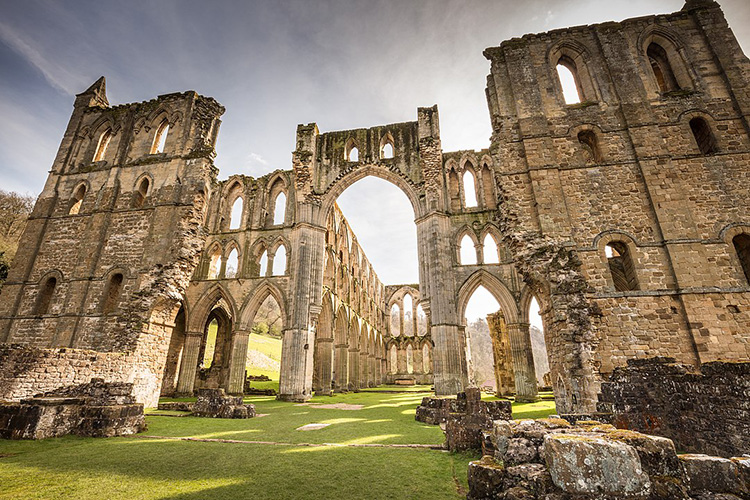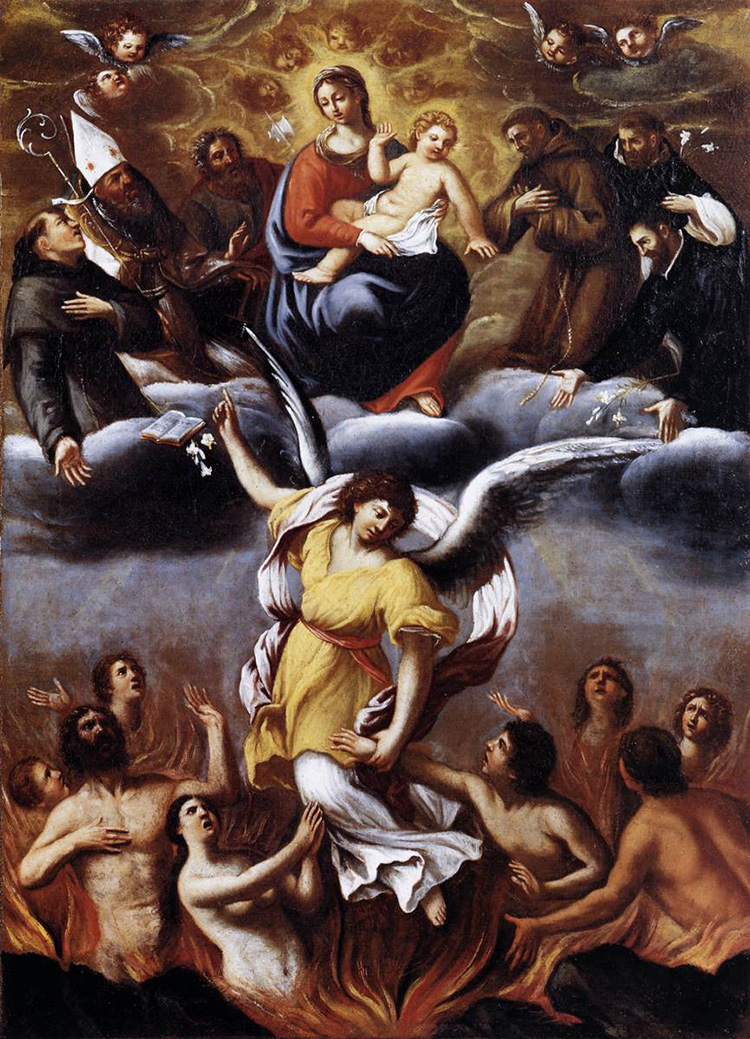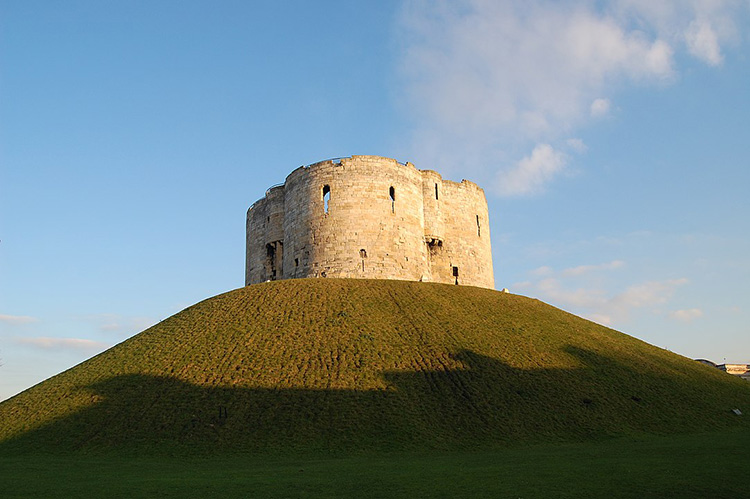
After William the Conqueror invaded England in 1066, he vigorously reorganised the English Church. William had previously secured the Pope’s blessing for his expedition by promising to reform the ‘irregularities’ of the Anglo-Saxon Church.
Following William’s reforms the Catholic Church’s power in England was solidified, reaching its zenith during the High Medieval period.
Here are 10 facts about the Church in the High Middle Ages:
1. William’s church reforms aided his conquest
Within a decade of William’s invasion in September 1066 nearly all of England’s Anglo-Saxon bishops had been replaced by Normans.
The Church was wealthy and influential, and William could not afford to have disloyal men filling its offices. Bishoprics were also useful ways of rewarding those who had served him against Harold Godwinson and later Anglo-Saxon rebellions.
Even native saints came under attack, as churches were steadily rededicated to Norman favourites.
2. England experienced a monastic revival
Existing English monasteries, such as Muchelney Abbey in Somerset, were reformed on Norman lines, and many new monasteries were established.
Most of these monasteries, like the prestigious Battle Abbey near Hastings, belonged to Benedictine monks, which was initially the only religious order in England.
Devout and rich Normans built new monasteries all over the country. Richard de Clare, the Norman nobleman who held Tonbridge Castle, established the impressive Tonbridge Priory in 1124.
3. The monastic life appealed to a range of people
Those who embraced it included aristocrats, knights and illiterate peasants, who were permitted to join the Cistercian order as ‘lay brothers’
At Finchdale Priory, there was even a retired ‘pirate’ (who was more likely a merchant) called St Godric. He started his life as a pedlar, then became a sailor and entrepreneur, before entering Finchdale Priory as a hermit for 60 years. So wide was his renown as a holy man that Thomas Beckett and Pope Alexander II reportedly sought his advice.
4. Cistercian monks built very remote monasteries
These so-called ‘White Monks’ (named after the colour of their habits) established monasteries ‘far from the haunts of men’, as their rules demanded. Their monasteries included Rievaulx Abbey, North Yorkshire, which by the 1160s housed 650 Cistercians.

Rievaulx Abbey. Image credit: Michael D Beckwith / CC.
The severity of the early Cistercian architecture reflects the austereness of their lives. Their rule emphasised the importance of manual labour and self-sufficiency, so Cistercians were experts in agriculture and brewery.
5. The Crusades brought military orders
Following the First Crusade in 1095 military orders sprang up, such as the Knights Templar and Knights Hospitaller, who were crusading orders with English property.
Though ultimately unsuccessful in their goal of wrestling Jerusalem back from its Islamic rulers, the Crusades did have a profound impact on England. They brought changes to architecture, health and science as crusaders returned to England with new ideas from Europe and the Middle East.
 Listen Now
Listen NowThe crusading orders did not just serve a military purpose. The Knights Hospitaller had charitable aims which included aiding the poor and sick.
6. Even peasants became Crusaders
Crusaders weren’t just knights and wealthy lords. In 1096, Peter the Hermit recruited paupers from England, France and Flanders to join him on a People’s Crusade.
Nearly 100,000 men, women and children marched from western Europe towards the Holy Land. While crossing Germany, they started the Rhineland Massacres, attacks against Jews which resulted in the deaths of thousands.
The People’s Crusade was eventually crushed at the Battle of Civetot in Turkey, when Muslim forces ambushed the peasant army.
7. People paid money to secure passage to heaven
In the High Medieval period, it was common for the wealthy to bequeath money for a priest to pray for them after death. It was hoped that prayer might shorten their time in Purgatory, where souls not condemned to Hell were purged of their sins until they were pure enough to ascend to Heaven.
The wealthy might also endow chantry chapels, such as the Percy Chantry at Tynemouth Priory in Tyne and Wear. Chantry priests would solely pray for the salvation of these benefactors and their relations.
Moreover, when purchasing ‘indulgences’ from the Church, Catholics paid large sums to ensure their time in purgatory would be reduced. Frequent abuses led this practice to be banned in 1567.

‘An Angel Frees the Souls of Purgatory’, Ludovico Carracci. Image credit: Public Domain.
8. Pilgrimages also brought you salvation
Cures for poor health or personal salvation might be obtained by making a pilgrimage to a holy site. The most popular English pilgrimage site was Canterbury Cathedral, where Saint Thomas Becket was martyred in 1170. Pilgrims from all over Europe would travel to see his shrine there.
There were many other shrines, each with unique features: Hailes Abbey in Gloucestershire boasted a phial of ‘Christ’s blood’.
St Winefride’s Well in Wales is supposedly the oldest pilgrimage site in Britain. Its healing waters are said to cause miraculous cures, and monarchs from Richard I to Queen Victoria have visited the site.
9. The parish church was the heart of religious life
At the local parish church ordinary people heard Mass every Sunday and celebrated the many saints’ days and religious festivals. The Church interwove religion into everyday life and the cycles of the agricultural year.
Church rituals marked life events from cradle to grave, and all members of the parish would look to the church for guidance.
The local priest would also hear confessions from his parishioners, and give advice as to how they might obtain forgiveness from God. This placed him in a unique position of power in the community.
10. Religious tolerance was not common
Those who disputed the Church’s teaching were considered enemies of the faith or heretics.
For example, during anti-Semitic riots in 1190 Yorkshire Jews were forced to take refuge from a violent mob in York Castle’s keep, where Clifford’s Tower now stands.

Clifford’s Tower, York. Image credit: Steven Fruitsmaak / CC.
Torn between a painful death or being forcibly baptised and ‘converted’, many decided to take their own lives. The father of each family killed his wife and children before taking his own life.
Jews were eventually expelled from England in 1290 by King Edward I.














